

Teach_spell. HSIE S1 - The Way We Were - Glenorie Public School. iPiccy: Free Online Photo Editing for You. Night Zookeeper - Inspire kids to write, read and create! The Story Museum - 1001 stories from around the world. Communication-Mount Lewis Infants-S1 - AC UNITS. George's Neighborhood - Online Games - Curious George. Galactic Hot Dogs. Start Reading Chapter One Best buddies Cosmoe and Humphree are entering the Intergalactic Food-Truck Cook Off, and this year, they can win!
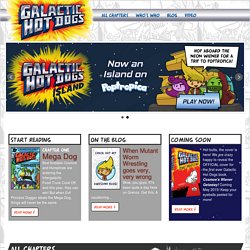
But when Evil Princess Dagger steals the Mega-Dog, things will never be the same. S New, Free, Time-Saving Tool: Word Workshop. Main Idea First Grade Reading Lesson 1, Standards Alignment, Worksheets, Activities. Online voice recorder. The Berenstain Bears - On The Job (1-2) Characteristics_of_a_21st_Century_Classroom.pdf.
Page. Page. English_s1_sampleu1.pdf. The-5-Parts-of-a-Friendly-Letter. Section 5: Games and Activities that Reinforce and Consolidate Numeracy. Playing games provides good opportunities for children to learn about logic and strategies.
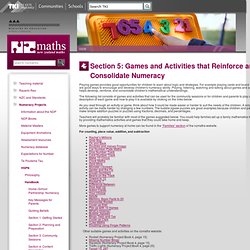
For example playing cards and board games are good ways to encourage and develop children's numeracy ability. Playing, listening, watching and talking about games and activities helps develop, reinforce, and consolidate children's mathematical understandings. The following list consists of games and activities that can be used for the community sessions or for children and parents to play at home. A description of each game and how to play it is available by clicking on the links below.
As you read through an activity or game, think about how it could be made easier or harder to suit the needs of the children. Teachers will probably be familiar with most of the games suggested below. More games to support numeracy at home can be found in the “Families” section of the nzmaths website. For counting, place value, addition, and subtraction. The Jolly Postman Teaching Resources & Story Sack Printables. The Jolly Postman Teaching Resources DISCLAIMER These resources contain our own artwork.
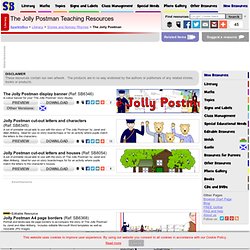
The products are in no way endorsed by the authors or publishers of any related stories, books or products. The Jolly Postman display banner (Ref: SB6346) A colour banner for your ‘The Jolly Postman’ story display. Free Illustrated Story Starters from the Young Writers Workshop. 3-Year-OldsOliver, T.
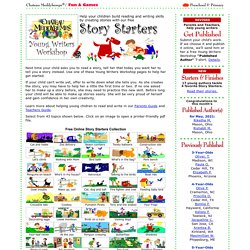
Madison, WIPaula O. Cedar Hill, TXElizabeth P. Phoenix, Arizona 4-Year-OldsOlive P. Cramerton, NCPriscilla O. The Story Starter Shed. Story Starters: Creative Writing Prompts for Kids. Bloom’s revised Taxonomy with verbs! Theme unit Community Helpers on Pinterest. Brain break activities on Pinterest. Free brain breaks for your classroom - GoNoodle. “This is such a fun, interactive way to get the kids moving... best of all it can take as little time as you need!
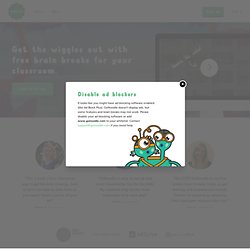
Teaching Challenges: Jolly Postman. One of the teachers I work with, Bec, put together a great unit of work around the book "The Jolly Postman" by Alan and Janet Ahlberg.
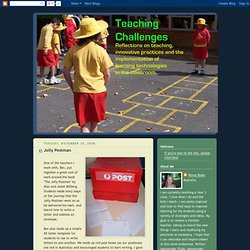
Students made story maps of the journey that the Jolly Postman went on as he delivered his mail, and learnt how to write a letter and address an envelope. Bec also made up a simple A5 letter template for students to use to write letters to one another. A Genre Study of Letters With The Jolly Postman. ReadWriteThink couldn't publish all of this great content without literacy experts to write and review for us.

If you've got lessons plans, videos, activities, or other ideas you'd like to contribute, we'd love to hear from you. More Find the latest in professional publications, learn new techniques and strategies, and find out how you can connect with other literacy professionals. More Teacher Resources by Grade Your students can save their work with Student Interactives.
More Home › Classroom Resources › Lesson Plans Lesson Plan Student Objectives. Letter Generator. Flat Stanley: Part 1. Flat Stanley. Flat Stanley. FS2.pdf. Richard Armitage reads Flat Stanley. The Most Magnificent Thing ebook by Ashley Spires book download for free. The Most Magnificent Thing Book Hack with Ashley Spires. The Most Magnificent Thing Book Trailer. A Picture Book That Pushes the Growth Mindset. Carol Dweck is the Stanford psychologist whose work around achievement and success has helped us understand the power of having a growth mindset.

Someone can accomplish a lot more through hard work and dedication, rather than by relying on their smarts alone. Educators know the benefits of having a growth mindset, rather than having a fixed one. We learn from trial and error. There is value in failure. The Most Magnificent Thing, which is written and illustrated by Ashley Spires, is a super way to initiate a conversation with students, or your own children, about the importance of possessing a growth mindset. Here are some of the things you can use The Most Magnificent Thing to teach student writers if you’d like to use this book in writing workshop (and you should!)
Character Development: This girl is into building and inventing. Ashley answered several questions I had about the book, as well as her writing/illustrating process. AS: It pretty much describes it to a tee. A Literacy and Community Building Project for Kids. Making Connections With Flat Stanley: Framed in France. Our school took on the challenge of “Going Global” this year.
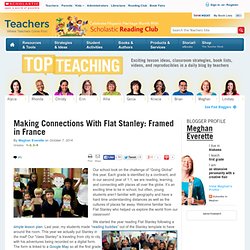
Each grade is identified by a continent, and in our second year of 1:1, we are reading, learning, and connecting with places all over the globe. It’s an exciting time to be in school, but often, young students aren’t familiar with geography and have a hard time understanding distances as well as the cultures of places far away. Welcome familiar face Flat Stanley who helped us explore the world from our classroom!
We started the year reading Flat Stanley following a simple lesson plan. Last year, my students made “reading buddies” out of the Stanley template t o have around the room. Mem Fox! A Literature Study Unit for Years F/1/2/3. In this Unit of Work, students will investigate a range of picture storybooks written by Mem Fox and create a range of artistic murals to represent their understandings of the text as well as their favourite pages and characters from the texts.
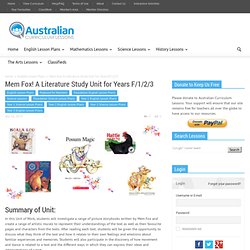
After reading each text, students will be given the opportunity to discuss what they think of the text and how it relates to their own feelings and emotions about familiar experiences and memories. Students will also participate in the discovery of how movement and dance is related to a text and the different ways in which they can express their ideas and interpretations of a text. Foundation: English: Recognise that texts are made up of words and groups of words that make meaning (ACELA1434)Understand that language can be used to explore ways of expressing needs, likes and dislikes (ACELA1429)